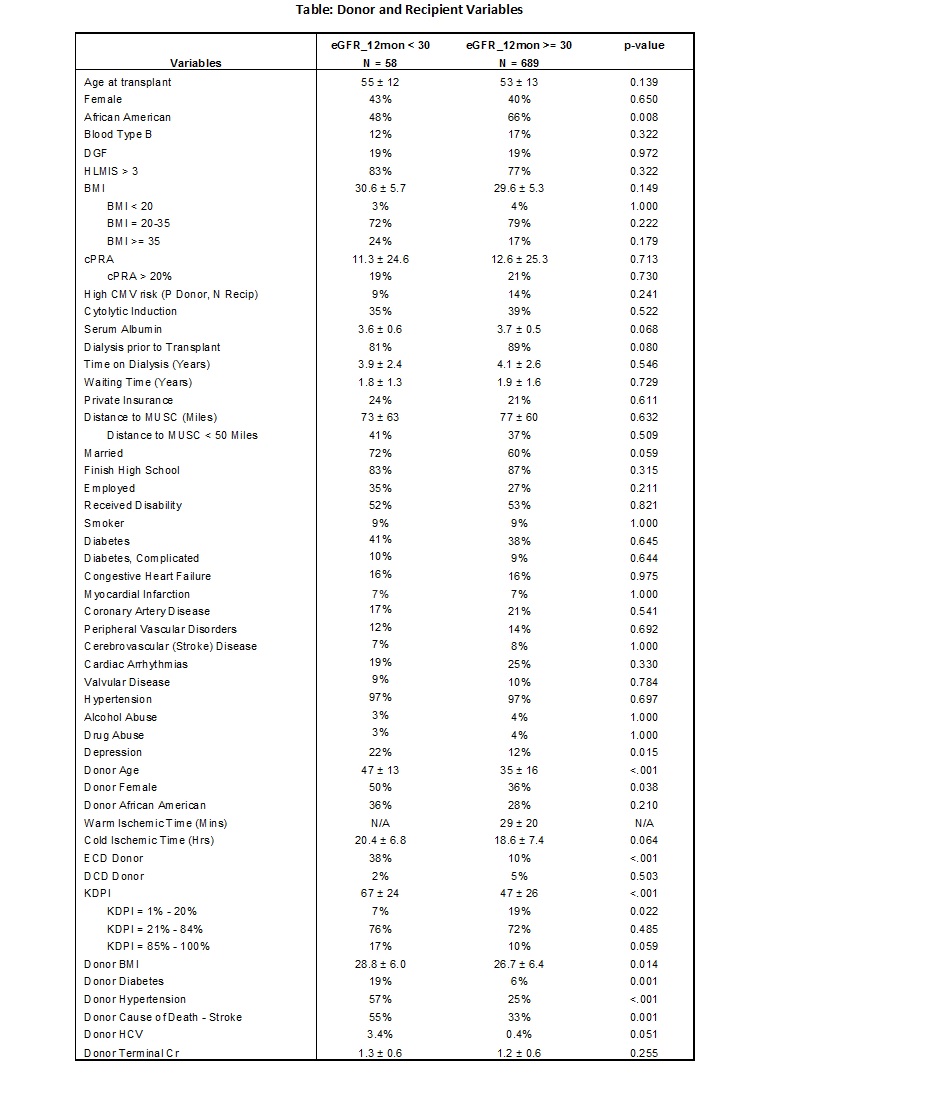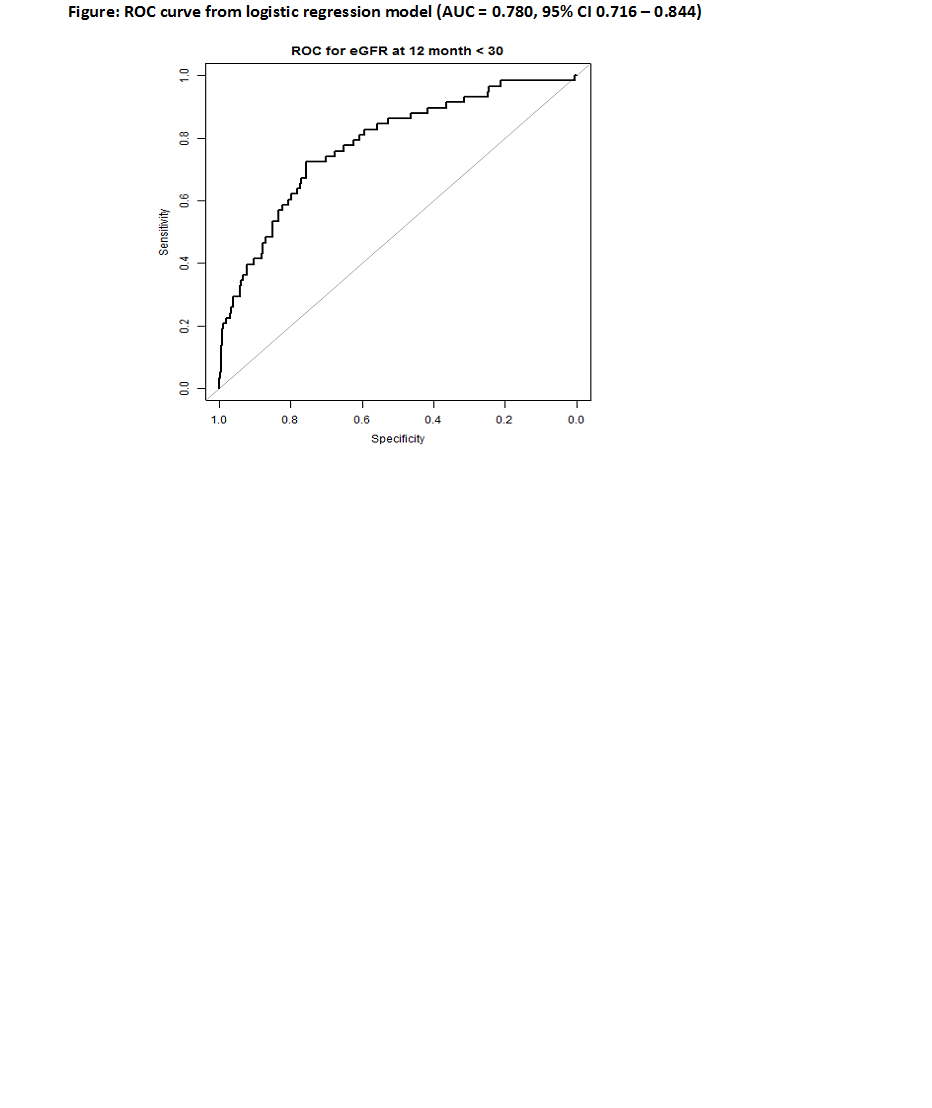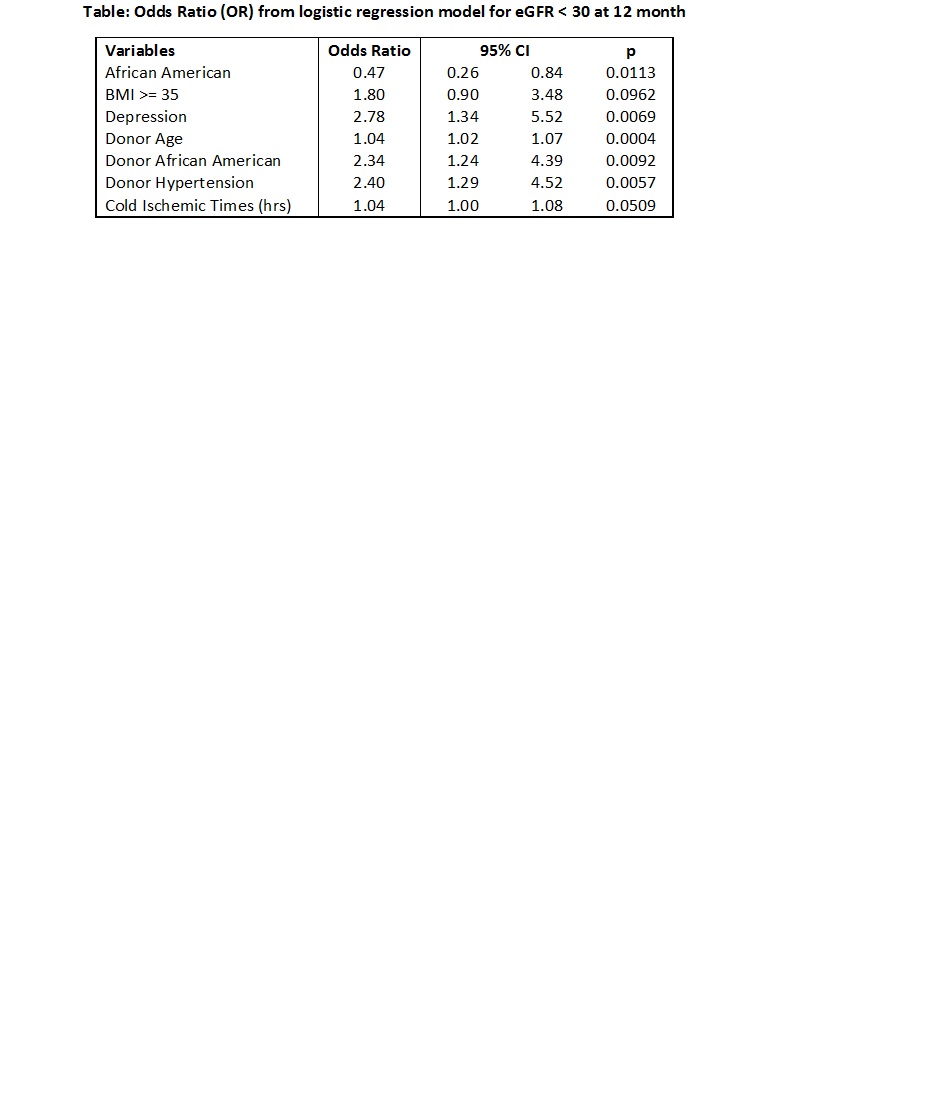Recipient and Donor Factors at the Time of Transplant as Predictors of Graft Outcomes
1Medicine, Medical University of South Carolina, Charleston, SC, 2Surgery, Medical University of South Carolina, Charleston, SC, 3Medicine and Surgery, Medical University of South Carolina, Charleston, SC
Meeting: 2019 American Transplant Congress
Abstract number: C90
Keywords: Glomerular filtration rate (GFR), Kidney transplantation, Risk factors
Session Information
Session Name: Poster Session C: Kidney Complications: Late Graft Failure
Session Type: Poster Session
Date: Monday, June 3, 2019
Session Time: 6:00pm-7:00pm
 Presentation Time: 6:00pm-7:00pm
Presentation Time: 6:00pm-7:00pm
Location: Hall C & D
*Purpose: As the ESRD population ages and the impetus to increase utilization of donor organs grows, we aimed to evaluate the impact of donor and recipient factors at the time of transplantation on the renal allograft function at one year which is a reliable predictor of long-term outcomes.
*Methods: We reviewed the medical records of 747 adult recipients of deceased donor renal transplants from January 2007 to June 2017 performed at MUSC, Charleston. Logistic (Firth) regression models were used to analyze donor and recipient factors (at the time of transplant) as predictor of eGFR < 30 mL/min/1.73 m2 at one year.
*Results: A total of 747 patients were included. At one year 58 patients had eGFR < 30 mL/min/1.73 m2 and 689 patients had eGFR > 30 mL/min/1.73 m2, Donor and Recipient characteristics are as shown in Table1.Recipient BMI greater than 35 and Depression; Donor -age, African-American race, hypertension and cold ischemia time were independent predictors of eGFR < 30 mL/min/1.73 m2 at one year.
*Conclusions: BMI greater than 35 and depression in the recipient, and Donor age, African-American race and hypertension, and cold ischemia time at the time of transplant were identified as predictors of eGFR < 30 mL/min/1.73 m2 at one year post transplant. These results may imply that while KDPI scores determine allocation, recipient factors and individual components of KDPI used to inform donor selection at the time of transplantation could optimize outcomes.
To cite this abstract in AMA style:
Soliman K, Rohan V, Zemin S, Price A, Salas AP, Lazarus D, Casey M, Taber DJ, Rao V. Recipient and Donor Factors at the Time of Transplant as Predictors of Graft Outcomes [abstract]. Am J Transplant. 2019; 19 (suppl 3). https://atcmeetingabstracts.com/abstract/recipient-and-donor-factors-at-the-time-of-transplant-as-predictors-of-graft-outcomes/. Accessed December 29, 2025.« Back to 2019 American Transplant Congress



